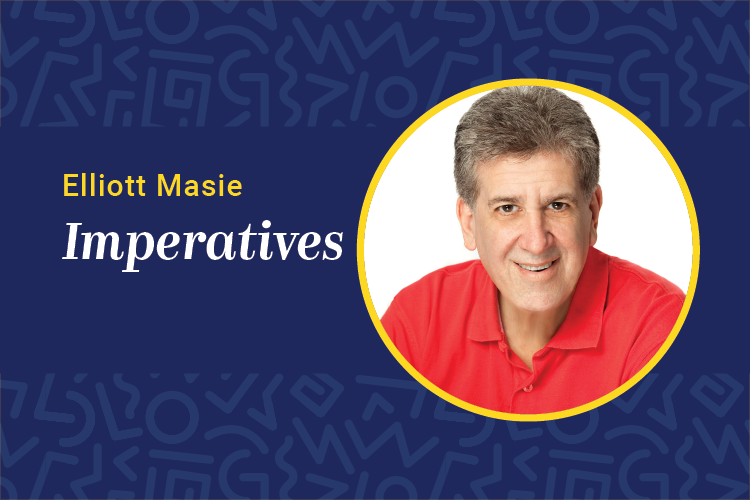 Look at the wrists of your workplace colleagues, friends and neighbors. Check out how many of them are wearing a digital, smart, electronic watch.
Look at the wrists of your workplace colleagues, friends and neighbors. Check out how many of them are wearing a digital, smart, electronic watch.
I completed this exercise in an Amtrak car while riding to Saratoga Springs, New York (pre-COVID-19). There were 38 people in the car, and I saw about 20 digital watches.
The rise in digital watches has been driven by the e-health and e-fitness phenomena. Many smart watches have motion sensors, blood pressure monitors and even physical stress data capture. While at the Consumer Electronics Show in Las Vegas earlier this year, we saw loads of new sensors and monitors that can be added to digital watches to provide real-time data about mindfulness, total talking time and other bio indicators.
Smart watches are moving beyond e-health to integrate workflow performance, group collaboration and behavioral coaching. Data from your enterprise systems or manufacturing machinery could be displayed on a smart watch for alerts and safety. Our watches could indicate which people in the workplace have the knowledge we need to answer a question, including if they are close to our location or available for a digital coaching moment.
Smart watches will be woven into digital and voice-based ecosystems, including Apple’s Siri, Amazon’s Alexa and Google’s Home. The speaker and microphone (and someday an optional camera) in the smart watch will allow us to ask a question and get a rapid, personalized response that comes to the watch or maybe to an earpiece or audio-enhanced glasses or goggles.
I predict the future of the smart watch as a powerful and personal device that can optimize learning, collaboration, performance support and “me data,” providing data dashboards for employees throughout the workday.
Let’s imagine some of the functions, features and technologies that could facilitate different and expanding experiences to enhance learning and readiness.
System and workflow changes: The smart watch could indicate that a piece of machinery, a product in a retail store, a technology in a hospital or a screen on a system is new or updated.
Mental readiness to learn: Learning requires a physical and cognitive readiness to engage and personalize new content. Imagine bio indicators that could measure your readiness to learn. I would not start an online module if I was tired or my stress level was peaking. A feedback indicator could advise learners about learning “right now.”
Knowledge right next to you: Suppose an employee is planning a trip to Atlanta to work with a new customer: Coca-Cola. At lunch, their watch indicates that a fellow worker used to work at Coca-Cola (by searching LinkedIn). They might seize the moment to get a context story about Coca-Cola culture from this colleague.
My behavioral patterns — digital coaching: Imagine two employees in leadership programs working on improving their interactions with colleagues. One wants to lower their tendency to interrupt colleagues mid-sentence. The other wants to increase the number of questions they ask their team members. The smart watch could provide real-time or end-of-day feedback to each of these employees about observed shifts in their behaviors.
Real-time nudges for a keynote speaker: I would love to be the first user for a smart watch app called “Better Speeches.” It would have a range of quiet vibrations that could prompt me on timing. It would listen for key phrases that I had programmed, perhaps to switch a visual display or play a media segment. And it might someday be networked with the audience’s watches to provide real-time curiosity or boredom notes.
Experiences vs. courses: As we explore the role of experiences — ranging from stretch assignments to field road trips to simulations — we will want to design and facilitate actions and interactions in the workplace that are experiences — with “aha” and even a few failure moments. Smart watches can be used as guides for these experiences.
Smart watch learning assets will come from both the enterprise and from employees as consumers, who may use meditation or health apps as personal tools. And our learning and workflow systems will build apps that are smart watch-ready. Let’s explore “learning watches” and apps, being sensitive to both privacy and data accuracy realities.














